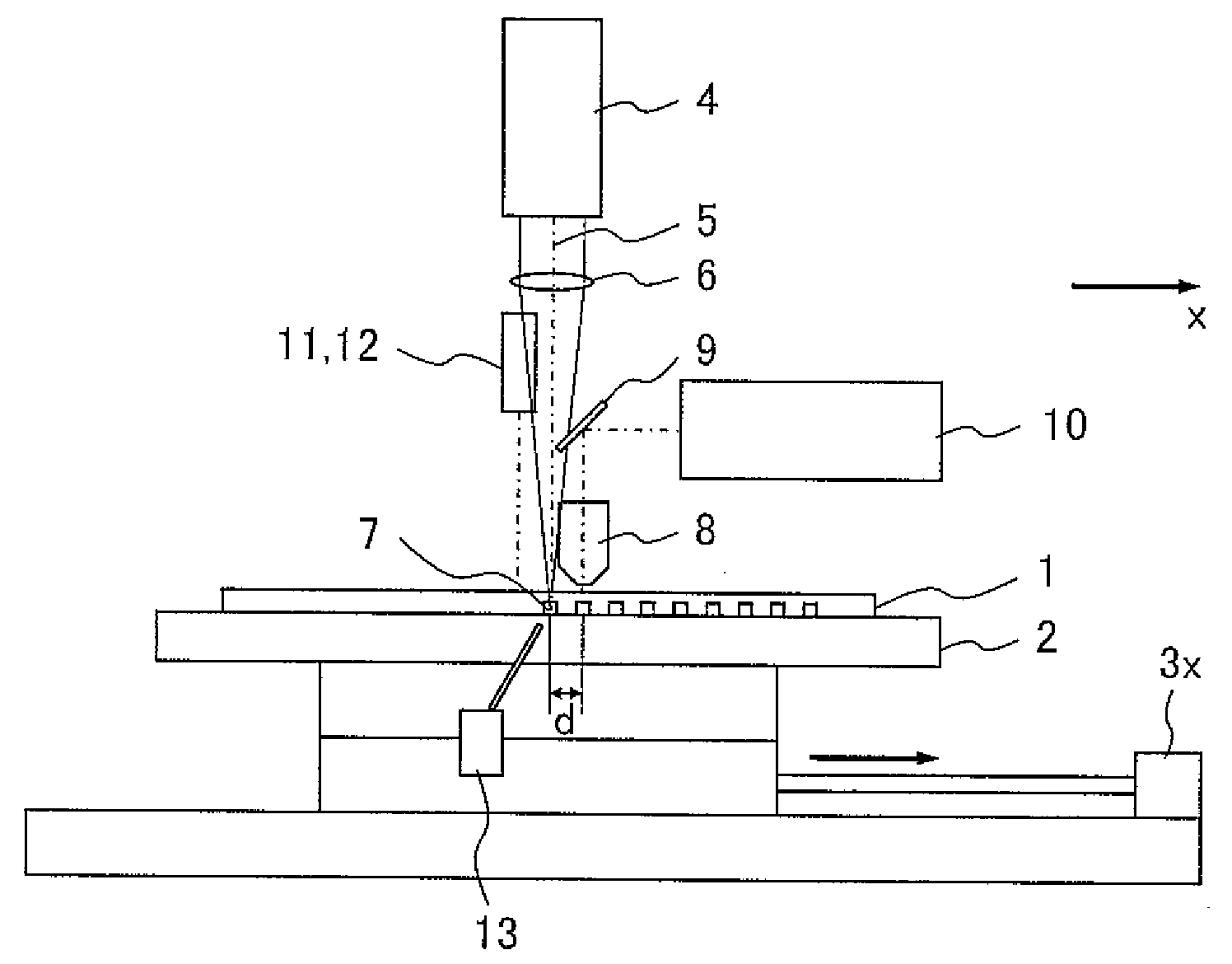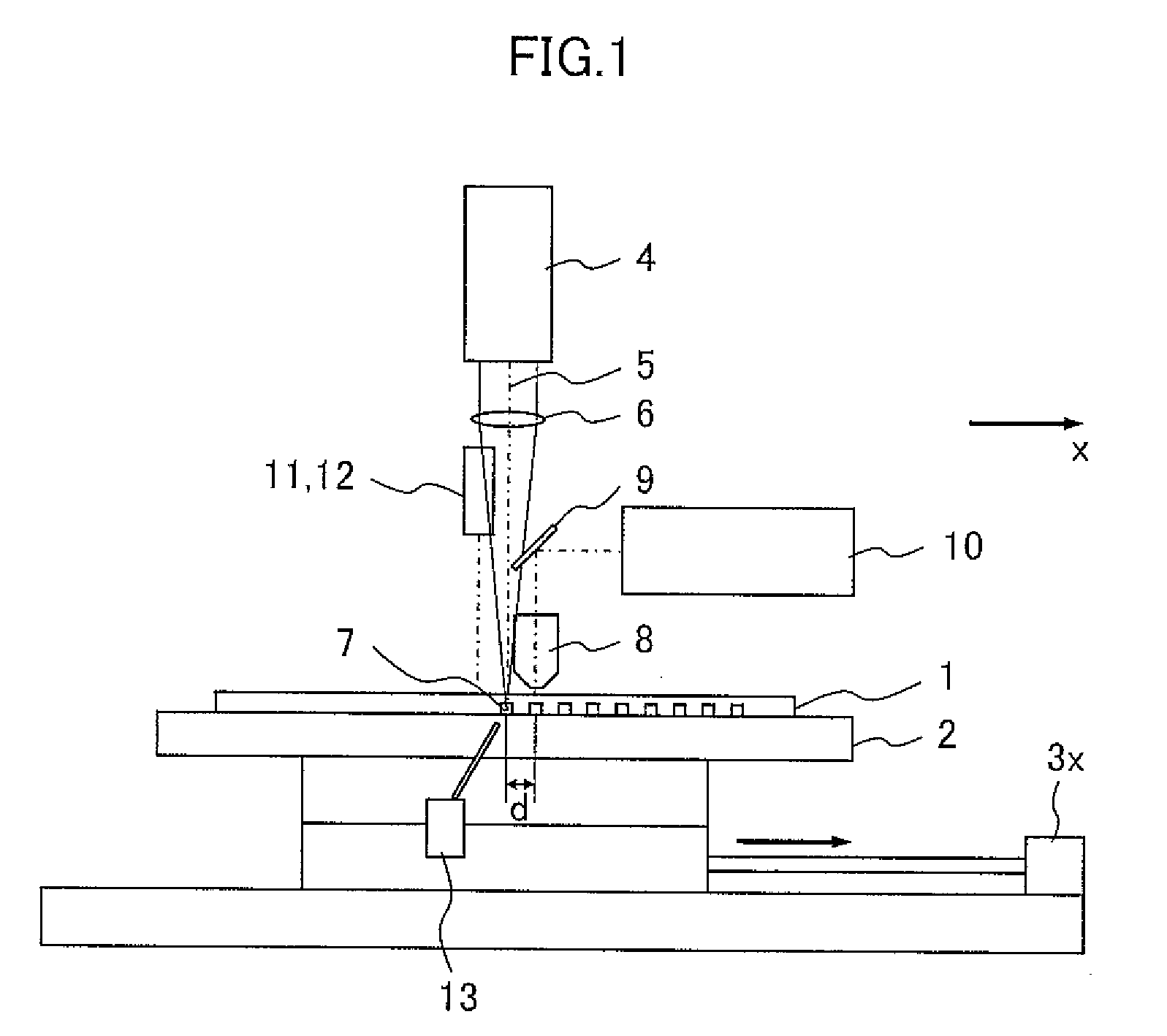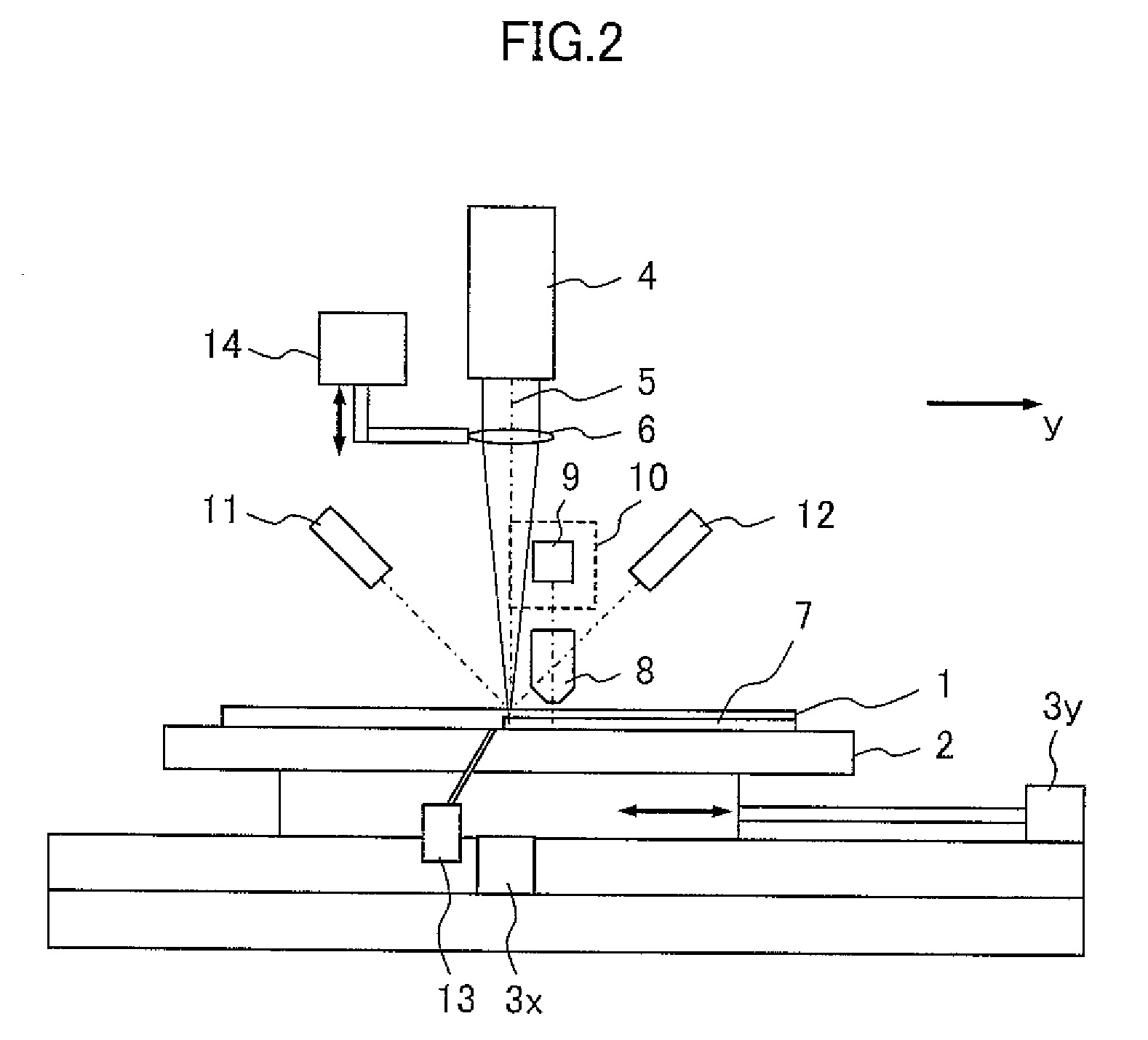Laser processing apparatus
- Summary
- Abstract
- Description
- Claims
- Application Information
AI Technical Summary
Benefits of technology
Problems solved by technology
Method used
Image
Examples
first embodiment
[0029]A first embodiment of the invention is described below referring to FIGS. 1 to 3, FIGS. 4A to 4G and FIGS. 5A to 5C.
[0030]FIGS. 1, 2 and 3 show the apparatus according to the first embodiment as viewed from the y direction, x direction and z direction, respectively. Reference numeral 1 denotes a substrate, 2 a stage, 3x an x-axis moving mechanism, 3y a y-axis moving mechanism, 4 a laser optics system, 5 laser light, 6 a condenser lens, 7 laser-processed grooves, 8 an objective lens, 9 a mirror, 10 an observation device, 11 a displacement gauge light source, 12 a photo-detector for the displacement gauge, 13 a mechanism for blowing off foreign matter, 14 a focusing mechanism, and 15 a base. The laser radiation section includes the laser optics system 4 and condenser lens 6. The optical inspection section includes the objective lens 8, mirror 9, and observation device 10. The undulation measurement section includes the displacement gauge light source 11 and displacement gauge ph...
second embodiment
[0057]Next, an example of optical inspection as a second embodiment of the invention will be explained referring to FIG. 6 and FIGS. 7A and 7B. Regarding things that have been described concerning the first embodiment and are not described below, they also hold true for the second embodiment.
[0058]FIG. 6 shows details of an optical inspection section according to the second embodiment; and FIG. 7A shows the shape of a laser-processed groove and FIG. 7B shows output data from a detector 25 of the optical inspection section. In FIG. 6, reference numeral 1 denotes a substrate and 7 denotes a processed groove. The optical inspection section includes an objective lens 8 and mirror 9 as in the first section and also includes, as components of an observation device, a laser light source for observation 21, translucent mirror 22, lens 23, aperture 24, and detector 25. When the focal point of the lens 23 is aligned with the aperture 24, the device functions as a confocal laser scanning micro...
third embodiment
[0061]Next, another example of optical inspection as a third embodiment will be explained referring to FIG. 8 and FIGS. 9A and 9B. Regarding things that have been described concerning the first embodiment and are not described below, they also hold true for the third embodiment.
[0062]FIG. 8 shows details of an optical inspection section according to the third embodiment. In FIG. 8, reference numeral 1 denotes a substrate and 7 denotes a processed groove. The optical inspection section includes a dark-field objective lens 31, mirror with a hole 32, lenses 34a and 34b, light source 33 and detector 35.
[0063]This embodiment uses a dark-field microscope as an observation device. Through this microscope, a surface roughness of the processed groove or leavings on it which would be invisible through an ordinary microscope can be detected. Therefore, inadequate cuts in laser-processed grooves or adhesion of foreign matter can be easily located.
[0064]The light quantity distribution in the y d...
PUM
| Property | Measurement | Unit |
|---|---|---|
| Thickness | aaaaa | aaaaa |
| Electrical resistance | aaaaa | aaaaa |
| Electrical conductor | aaaaa | aaaaa |
Abstract
Description
Claims
Application Information
 Login to View More
Login to View More - R&D
- Intellectual Property
- Life Sciences
- Materials
- Tech Scout
- Unparalleled Data Quality
- Higher Quality Content
- 60% Fewer Hallucinations
Browse by: Latest US Patents, China's latest patents, Technical Efficacy Thesaurus, Application Domain, Technology Topic, Popular Technical Reports.
© 2025 PatSnap. All rights reserved.Legal|Privacy policy|Modern Slavery Act Transparency Statement|Sitemap|About US| Contact US: help@patsnap.com



